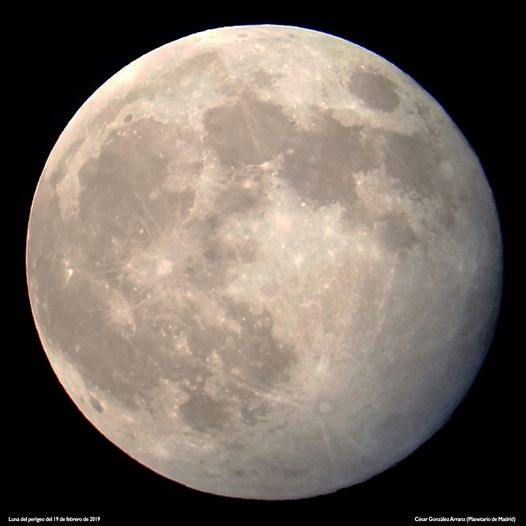Our natural satellite revolves around the Earth describing an elliptical orbit (as if we take a circle, flatten it a bit and give it the shape of a melon). Therefore, while the Moon revolves around our planet, there is a certain point in the lunar orbit that is farthest from Earth, called apogee, and another one that is closer, called perigee. The Moon takes approximately one month to complete a full revolution and in that period it will position itself one day at apogee and, a few days later, at perigee. On the other hand, we have the succession of the lunar phases. From Earth, as the Moon revolves around us, we will see how the Sun illuminates different areas of the lunar hemisphere visible from our planet every day. In full phase we see the Moon fully illuminated, 100% full of light reflected from the Sun because the three stars are aligned in this order: Sun, Earth and Moon. When it is full phase, like today, the Moon rises above the horizon when the Sun sets and is visible in the sky throughout the night.
The perigee moon occurs when the full moon phase coincides with the lunar perigee, or at least no more than 10% apart from this point. In such a situation, our satellite can be seen 14% larger and 30% brighter than any other full moon that does not coincide with perigee. But beware! Be very careful: we would need those two full moons in the sky at the same time to compare them and, most likely, we would not notice a difference.
The lunar perigee occurs on June 15, at 01:21 hop (official peninsular time, the one marked by our clocks) with the Moon at 357,434 km. from the earth. The full moon phase is today at 13:52 hop. Therefore, this coming night from Tuesday the 14th to Wednesday the 15th you can take a look to see if you can discern that the full moon looks bigger than any other full moon…
The perigee moon is a usual astronomical phenomenon that has occurred in the past, occurs today and will occur again in the future… next month, on the night of July 13-14, it will happen again. Do not let yourself be influenced by all the commotion that can be organized in the media with this astronomical event. By the way, supermoon is an astrological term (with ele) coined by an astrologer named Richard Nolle to dye as catastrophic the fact of the Moon-Earth closer proximity. It is a term that astronomers do not like at all because it is an unscientific astrological term and, therefore, lacking in any rigor. Do not use it and, please, do not let its use spread.
In the image you have the perigee moon that occurred on February 19, 2019, captured by our colleague César González using a mobile phone attached to the telescope located in the observation tower of the Planetarium.
Credit and image: César González Arranz (Madrid Planetarium).
